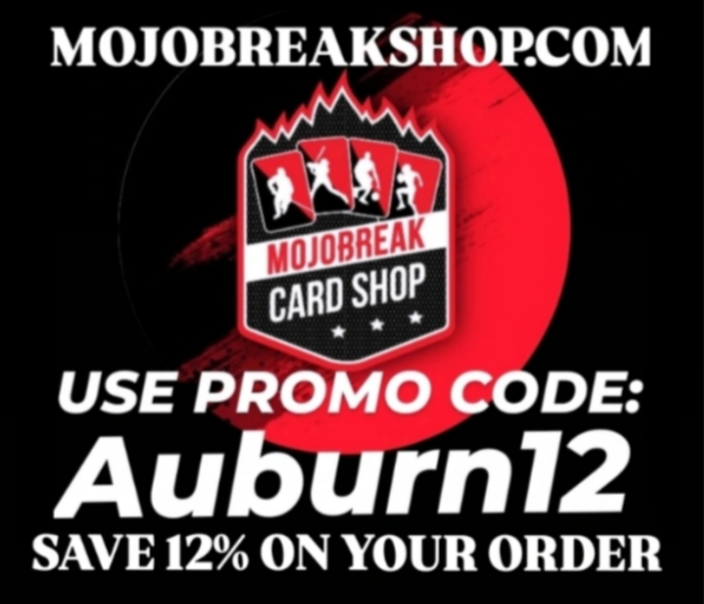Buy Low Sell High
When is the best time to buy/sell?
Buying low and selling high is traditionally a stock market term. If you started buying stocks during the inception of the stock market you’d be a very rich person today. The Great Depression of the 1920’s, the Savings and Loan crisis of the 1980’s, the Dot-Com Bubble of the 1990’s and the Real Estate Bubble of today were mere blips on the radar for the New York Stock Exchange (NYSE) continued rise over the years. In a way, if you mirrored your sports card buying during this time, you would have experienced similar success. Imagine if you could go back in time and buy the old Tobacco cards of the late 1800’s. Or if you scooped up a couple 1952 Topps Mickey Mantle baseball cards at the bargain price of around $0.05 cents in the 1950’s. You would not only be a legend in the hobby, you’d probably be quite well off today.
The comparison between buying and selling baseball cards and buying and selling stocks, probably ended in about the late 1970’s. The stock market has sky rocketed, while buying sports cards made after 1979 probably has been a losing venture. If you bought and held Microsoft’s IPO in 1986, you’d be very wealthy even with a modest investment. On the other hand, if you bought a bunch of Greg Jefferies 1988 Baseball Rookie Cards, when Jefferies was considered the hottest prospect in the game, you would have a bunch of worthless cardboard sitting around taking up space.
Modern card collecting, specifically after the year 2000, proves to be even more difficult. Pack prices are typically in the $5.00 – $10.00 range. Making the risk of getting burned on a bad pack or box that much greater. For every great box you open, there might have been 20 boxes you cracked that didn’t live up to the price you paid for it. With box prices ranging from $50-$500, it can get quite expensive very quickly.
So if your collecting goal is to make money on your collection, first and foremost, you shouldn’t be busting packs or boxes. Period. The only time you should buy a box is with the intention to not open it, and hope the box value goes up over time. Think 2001 Bowman Chrome Baseball, with the Albert Pujols Autograph Rookie Card. If you bought the boxes in 2001 or 2002 you’d be up a couple hundred dollars today. Even buying and holding unopened boxes is quite a gamble. Most products come out hot, with a high price, and then fade as 99% of players don’t ever live up to the hype bestowed upon them. Buying and holding unopened sports card boxes probably does have value as a long term investment. Think about what an unopened box on 1952 Topps would fetch on ebay today.
If you want to make money from your collection of cards you are going to have to do several things. First, you have to throw out all your fan ‘bias’. Each player, each team, each sport, has to get equal treatment. Meaning if you just collect Kansas City Royals Rookie Cards with the hope those players will hit, you are going to be sorely disapointed. You have to look at the collecting world as a whole, and look for opportunities to capitalize on cards you deem to be cheap. Popularity has a HUGE impact on collecting. Imagine if Derek Jeter was on the Royals for all these years instead of the New York Yankees. For one, he would have zero World Series rings. And his stats still wouldn’t blow away other short stops in the league. His cards would not be anywhere near the price they are today. His Autograph, and this is just a guess, would probably be worth about $5-$20.
That doesn’t mean just load up on players who play for popular teams. This is when card collecting gets very speculative. You have to become a talent evaluator. In a similar way you research a particular stock to buy, you have to research the particular player you are interested in. It would be a mistake to only look at on field performance as well. There are a lot of players who are very talented, and put up great stats, but have low card values for various reasons. One tip I would use is to try and find interviews of a player you are interested in buying. A players personality plays a LARGE part in how collectible and popular they could become. Listen to an interview with Jamarcus Russell. When I first heard the guy being interviewed at the 2007 NFL draft, I knew right then I would never buy one of his cards. He came off as boring, and not very intelligent. Two huge red flags when speculating on sports cards. When I first heard Chad Ochochinco being interviewed in 2001, he said he wanted to break all of Jerry Rice’s records. Sure, he came off as kind of arrogant, but in a funny way. He laughed, he smiled, he was engaging. Those rookie cards I bought in 2001 I am still ‘up’ on even to this day.
When deciding when to buy a particular player you have researched you have to take price history into account. This will help you establish when to buy. For example, if you have researched New York Jets Quarterback Mark Sanchez, and are interested in buying his cards, I would compare the present day value of his cards to other NFL QB’s who have similar cards already on the market. Eli Manning, Matt Ryan, Carson Palmer, are a few suggestions as to where to start. Try and compare cards from the same set if possible. For example, compare the price of Eli Mannings Sp Authentic RC card to the price of Mark Sanchez’s Sp Authentic RC card. Be sure to keep in mind the differences between the cards you are comparing. Do they have the same amount printed (serial number). Do they both feature a jersey patch or autograph. Be sure to research this as we all know those have a huge impact on value.
If you are serious about making money off your collection you have to know when to sell. You can not fall ‘in love’ with a particular player or card. Sports Cards are not like the stock market. Typically they do not continue to go up in value. Sports Cards don’t pay you a dividend. And every year, a new batch of cards come out that usually get all the hype and attention, and past sets typically go down in value even if the quality of players in the set remain high. Knowing when to sell is probably easier then knowing when to buy. If a player is the hottest player in his sport. Sell. Period. That’s an easy one. Tom Brady cards haven’t gotten back to the values they were when he threw over 50 TD passes. Vince Carter after he won the NBA Slam Dunk Contest was the hottest player in the NBA. SELL SELL SELL!!!
What happens when a player who is hot, maybe not the hottest player in the game, but still very popular, starts to falter? Do you sell? Maybe. Lets look at Mike Vick. When he got caught up in his dog fighting scandal, his cards plummeted. To me, and this may sound strange, I see that as a BUYING opportunity. Remember, you want to buy low, and Vick’s cards couldn’t get any lower after he went to jail. By holding those cards for the time Vick was in jail, and then selling when he signed with the Eagles, you made a little bit of money.
To sum things up, making money buying and selling cards for profit can prove to be very difficult for many reasons. The amount of money you could make, or lose, depends on many factors. I would create a spreadsheet, or keep a notebook to track your progress along the way. Good luck!


